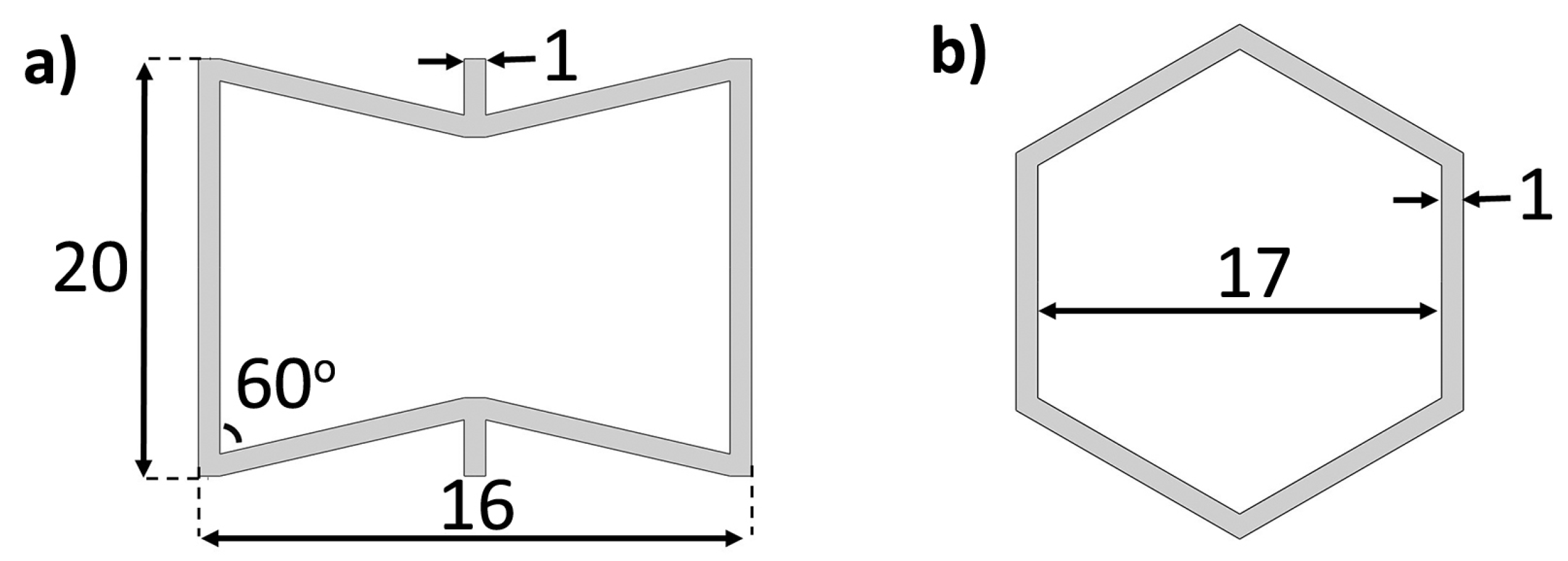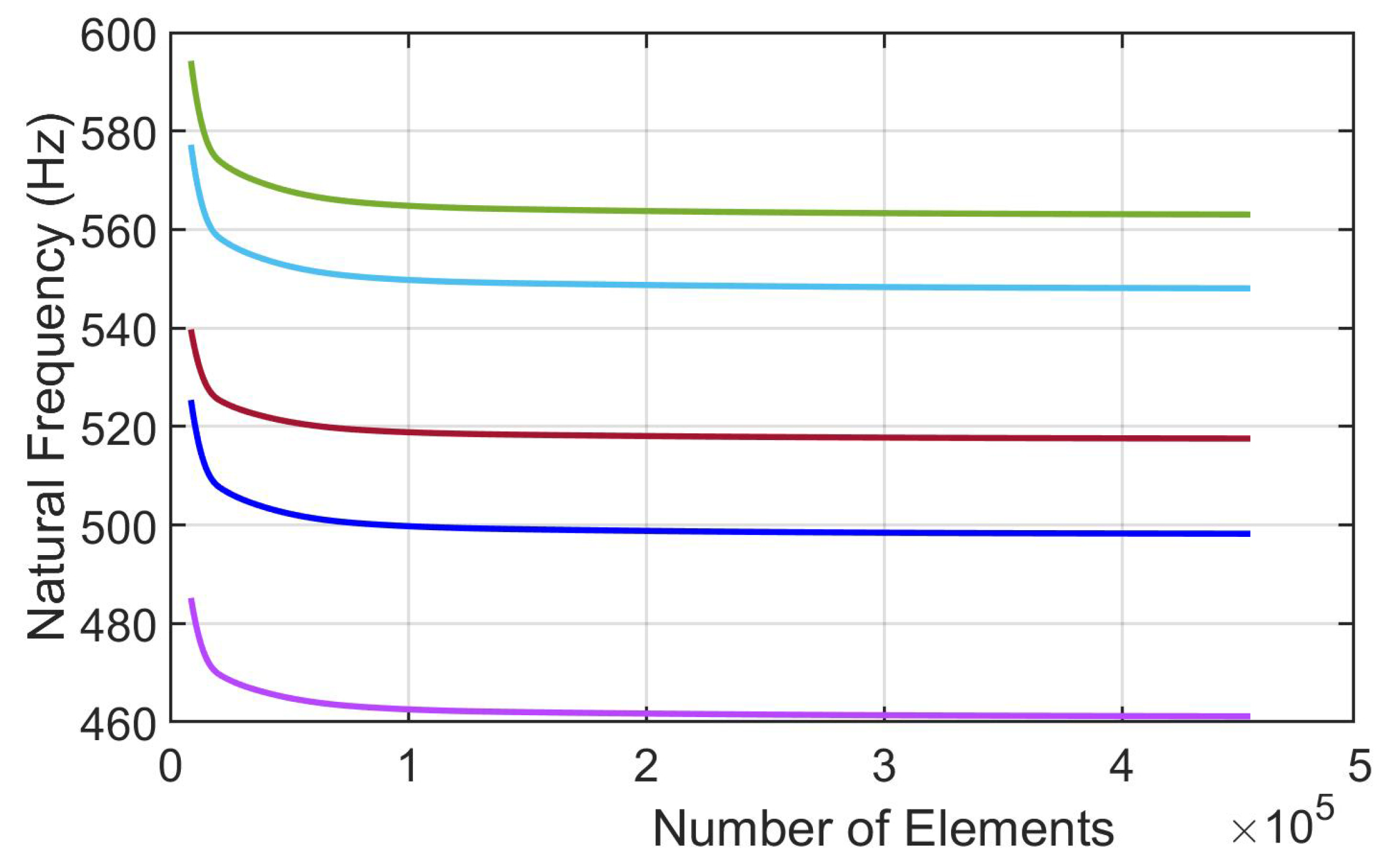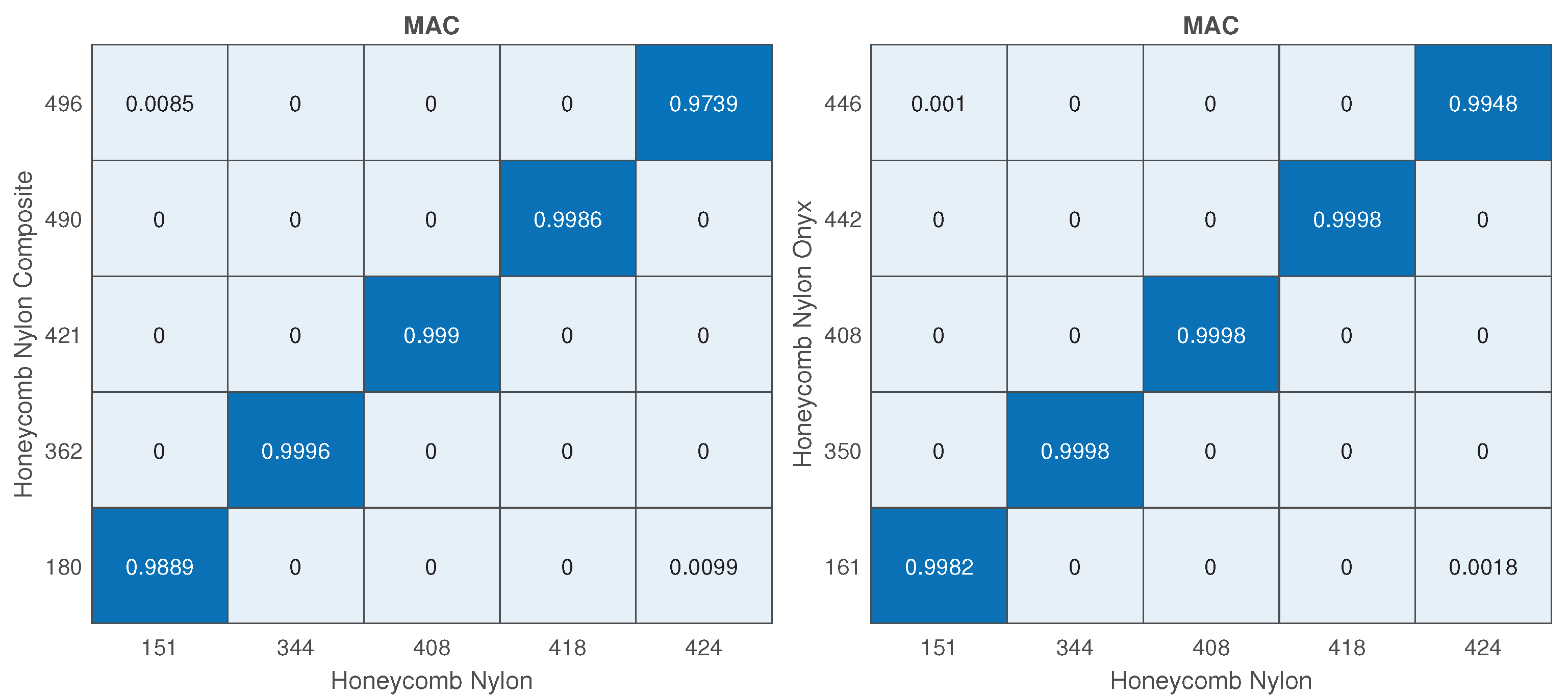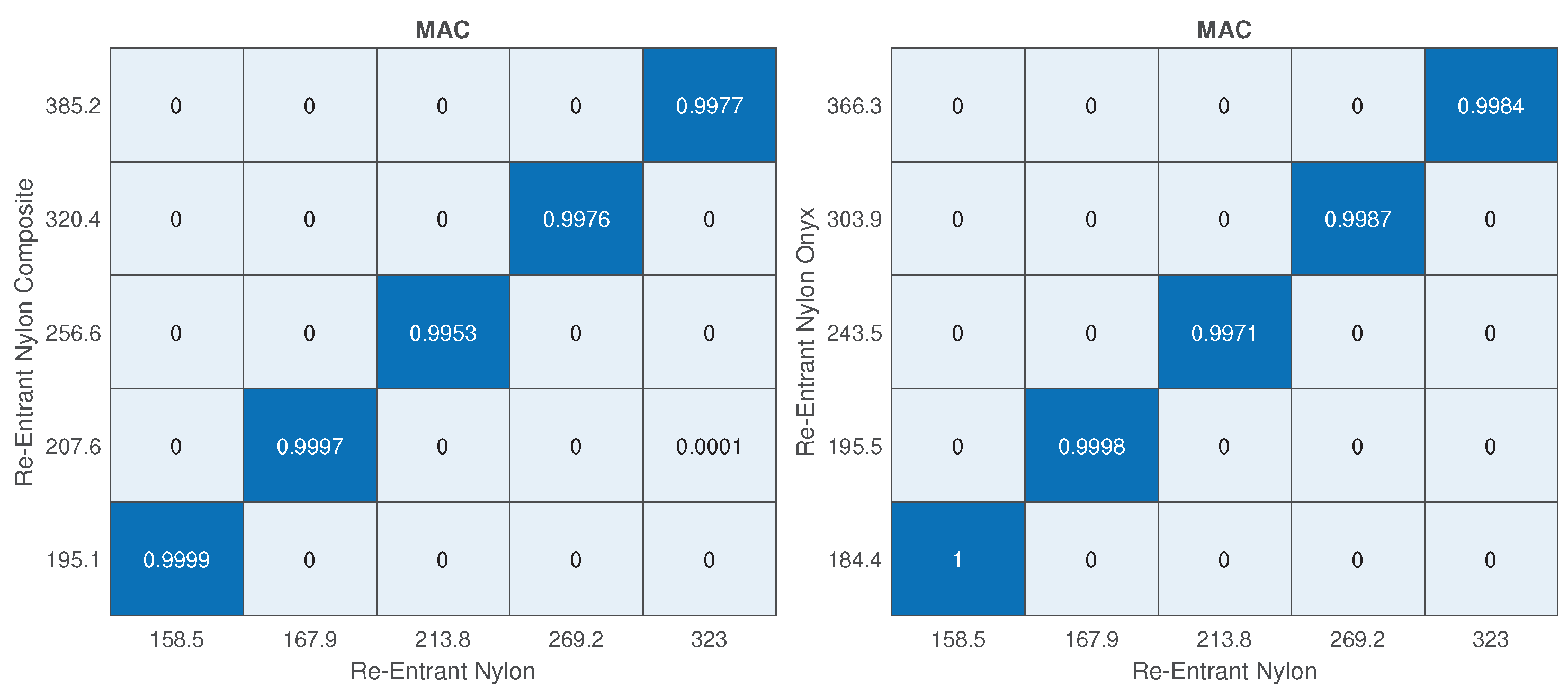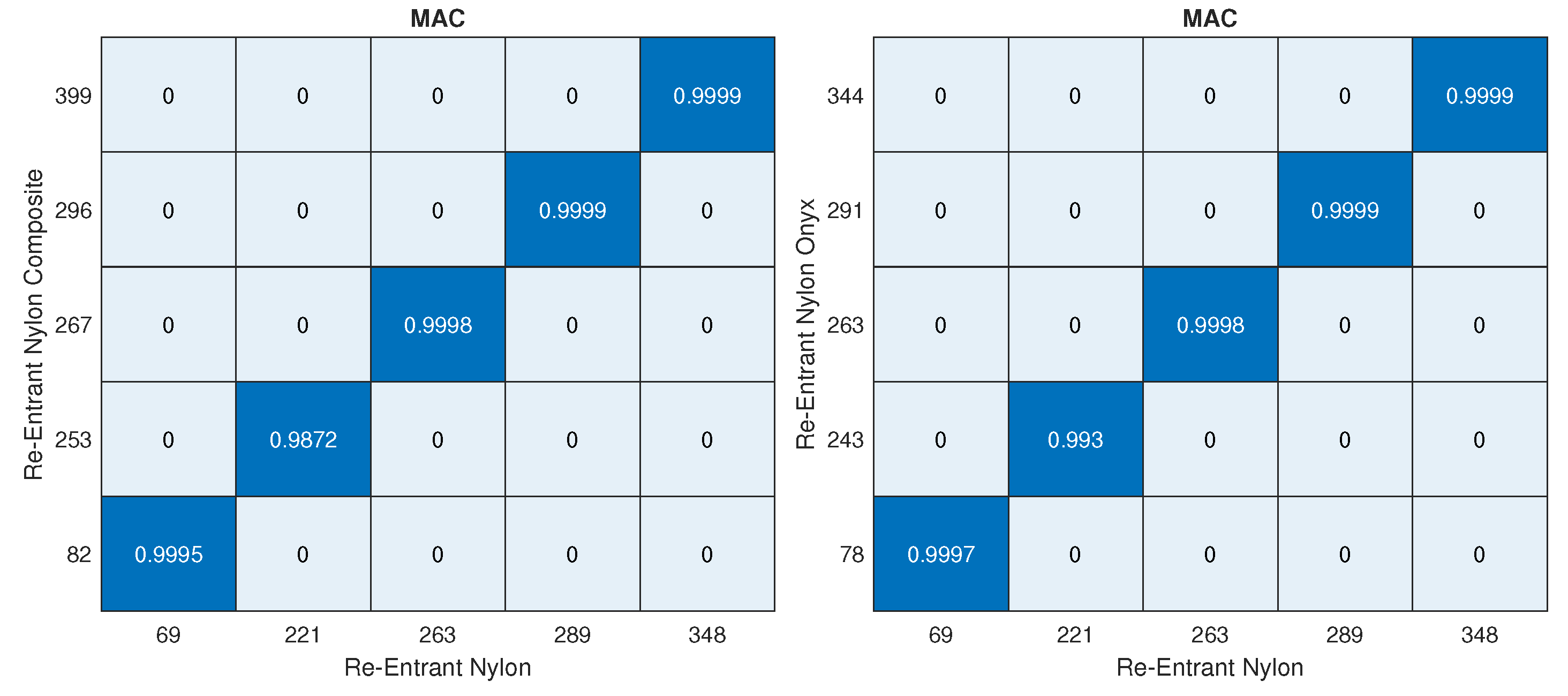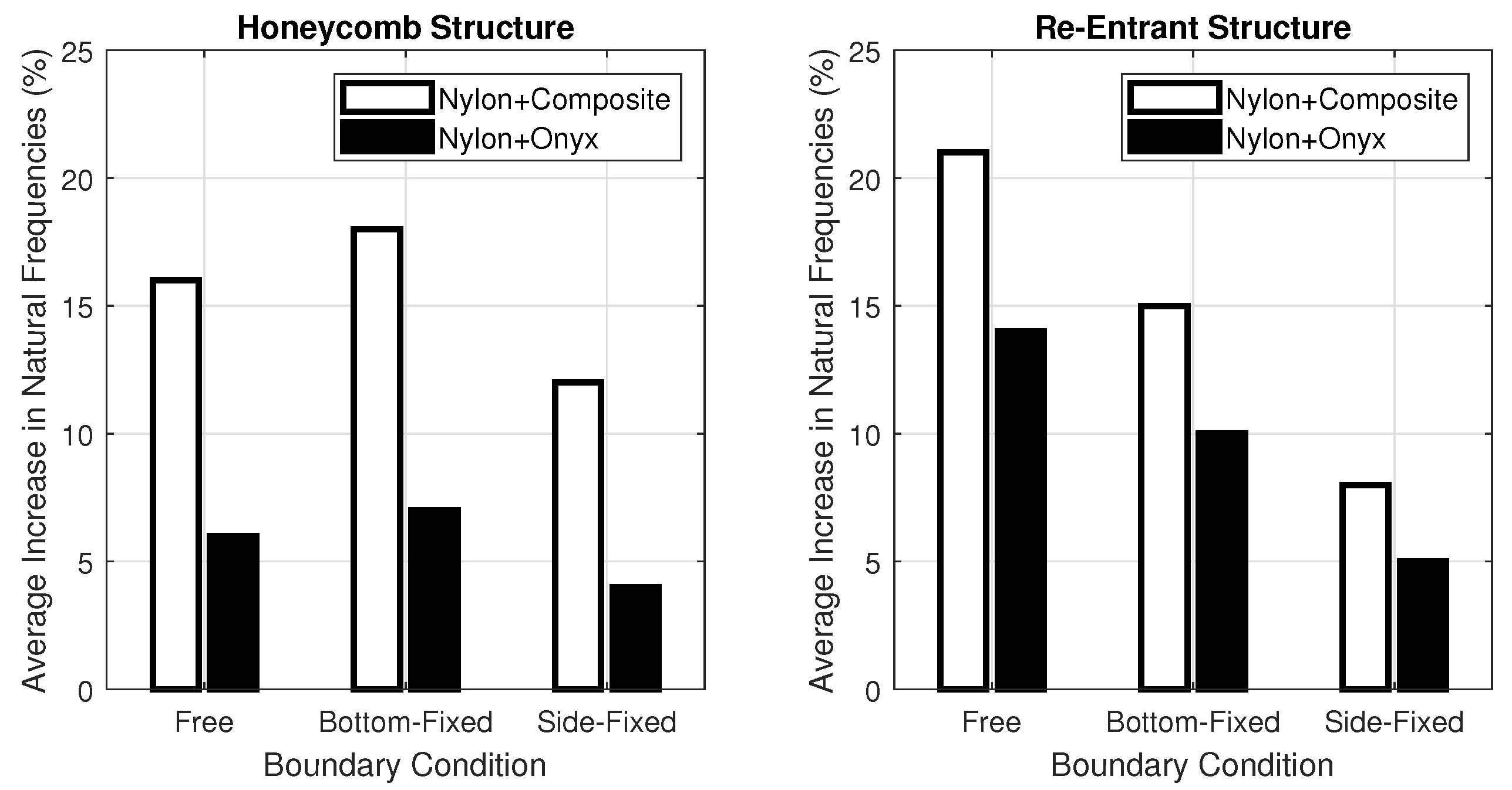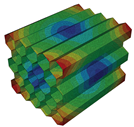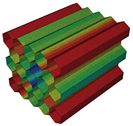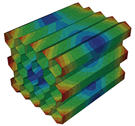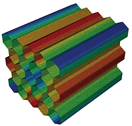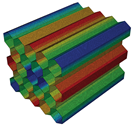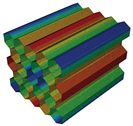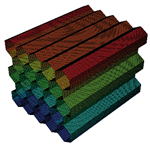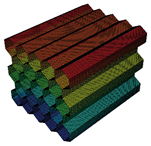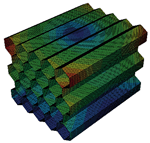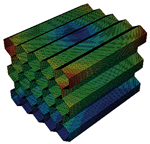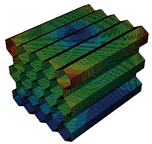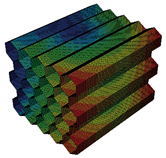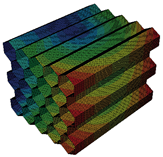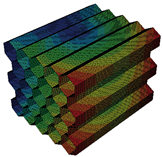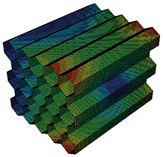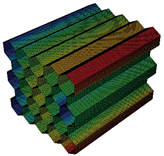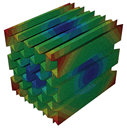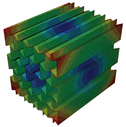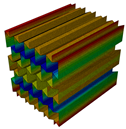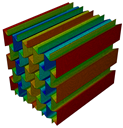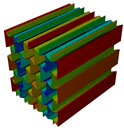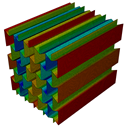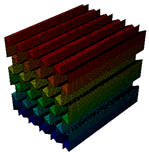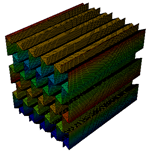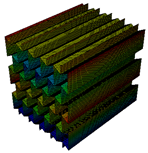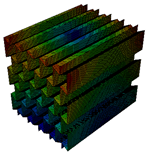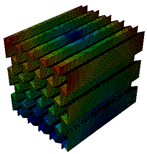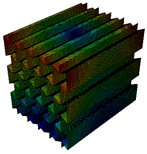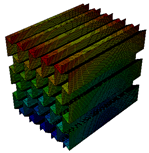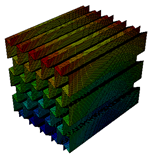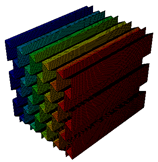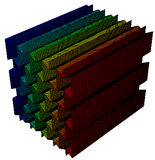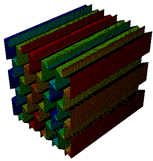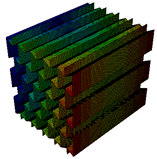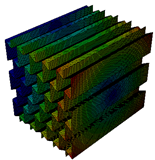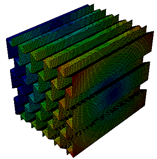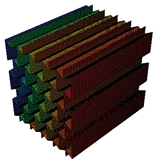1. Introduction
Lattice structures are formed by interconnected and repeated unit cells built by open pores and non-stochastic orientation [
1]. Lattice structures have distinct characteristics and are used in engineering. Especially in the automotive and aerospace industry [
2], manufacturers use lattice structures to reach the goals of reduction at the amount of material, time, and energy in production and, most importantly, strengthening their product while decreasing its weight [
3]. Although different types of conventional manufacturing techniques have been considered for producing lattice structures, they are not optimal for production since they require complex tools with precise process control and need more steps to assemble or bond to create intended lattice structures [
4]. Parts with grids can be manufactured easily from discrete unit cells with the help of additive manufacturing processes [
5].
Lattice structures have several different types. One popular type is the regular honeycomb lattice structure, which is formed by uniformly distributed double-layered hexagonal cells [
6]. These lattice structures provide high strength with low weight and less material and they are generally used as a form of sandwich structure [
7]. Due to their favourable qualities in several applications, honeycomb lattice structures have a wide range of use in electronic equipment [
8], air vehicles [
9], and highway bridge structures [
10]. In addition to regular lattice structures, such as the regular honeycomb, some cellular materials come forward due to their unusual behaviours, namely meta-materials. Meta-materials originate from materials that are used in electromagnetism with unconventional mechanical properties [
11]. In addition, meta-materials are known as material systems whose physical properties can be tailored for the needed purpose and performance [
12,
13]. A common meta-material is the auxetic materials that are known for their specific property of having a negative Poisson’s ratio (NPR). Opposing conventional materials, they laterally expand under tensile loads and shrink when a compressive load is applied. This unique behaviour provides the utilization of auxetic lattice structures in different applications for energy absorption and vibration damping.
Normally, honeycomb lattice structures are composed of two chevrons and two parallel ligaments. The ligaments that create the chevron provide elasticity to the cell, while the parallel ligaments yield stability to the lattice structure. The cell direction in which auxeticity is experienced is called in-plane direction and the direction that is perpendicular to the in-plane direction is named the out-of-plane direction. In the same way, re-entrant lattice structures are constituted by flipping the chevrons or, in other words, increasing the angle of the intersection that creates the chevron by more than 90
. Similarly, a regular honeycomb lattice structure is obtained if the angle is less than 90
. Thus, in opposition to the regular honeycomb lattice structures, the re-entrant lattice structures could expand or contract in the transverse direction when stretched or compressed [
14]. Due to that, improved performances could be recorded in re-entrant lattice structures, such as enhanced shear modulus [
15] and energy absorption in comparison to a regular honeycomb lattice structure [
16,
17].
Meta-material lattices possess unique vibration characteristics, including band gaps and directional wave propagation characteristics that outshine them in control and operate wave propagation and vibration suppression [
18]. Researchers have worked on multi-material lattice structures, the vibration of 3D printed standard samples, and lattice structures via different methodologies. Whitten et al. investigated the lattice vibration frequencies of Mg
Si by using elastic constants retrieved from the longitudinal and transverse sound velocity measurements of Mg
Si from 80 to 300 K using a resonance technique [
19]. Csertil and Tichy studied the classical lattice dynamics of honeycomb lattices with harmonic approximation [
20]. Hori and Asahi showed that the transfer matrix method by Kerner is an effective method to calculate the eigenfrequency distribution of some types of lattice structures, including disordered, by applying the transfer matrix method to an atomic linear chain vibration problem [
21]. Li and Yan researched if an innovative two-dimensional (2D) hybrid auxetic elastic metamaterial could broaden the bandgap of vibration isolation [
22]. The research conducted by Kaplunov et al. aims to find the lowest vibration modes of multi-component rods and cylinders with changing high-contrast material properties of the components [
23]. Xin et al. proposed re-entrant and star-shaped hybrid honeycomb meta-materials (RSHHM) in which the elastic rubber-coated mass inclusions were added to create the low-frequency band gaps [
24]. Tateno and Nishie investigated the natural frequency of a multi-material additive manufactured object experimentally [
25]. Monkova et al. examined the vibration damping characteristics of 3D printed Acrylonitrile Butadiene Styrene (ABS) samples under harmonic excitation at three placed inertial masses [
26]. Hou et al. worked on mechanical properties of sandwich composites with 3D printed auxetic and non-auxetic lattice cores under low-velocity impact and found that the re-entrant lattice structure panel is good at robustness and durability but does not perform well at energy absorption capacity [
27]. However, there is no research exploring the effect of multi-material implementation on the vibration behaviour of lattice structures.
The topology parameters of lattice structures directly affect the mechanical properties and, by means of these parameters, lattice structures are tailored for fulfilling the needed properties. However, topology parameters are not only the main driver for changing the properties but also for the constituent material influences the mechanical properties. Especially, the utilization of a multi-material approach provides optimization of the lattice structure in accordance with the design requirements. For example, carbon-fibre-reinforced lattice structures are exploited in the parts of lattice cell structures in which high buckling loads are needed. The improvements in additive manufacturing create an opportunity to produce multi-material lattice structures and fibre replacement is also possible within limited directions. The knowledge of re-entrant and honeycomb lattice structures has been improved and the cell geometry can be optimized topologically for specific applications to date. However, what is not known and what is limited is how a specific material or materials will function when used in part of the cell structure, especially for continuous or chopped fibre replacement in some parts. Further research is necessary to understand what multi-material configuration can be utilized in a specific part of the cell to optimize the cellular structure’s structural efficiency for its desired application. In this study, an original contribution was made to understand the free vibration characteristics of the honeycomb and re-entrant lattice structures when the multi-material configurations are utilized. The multi-material configurations were achieved by the substitution of material of parallel ligaments converted into continuous (CFRN) or chopped carbon-fibre composite (Onyx). The effects of this configuration on the natural frequencies were investigated by comparing the correlated mode shapes of the lattice structures.
